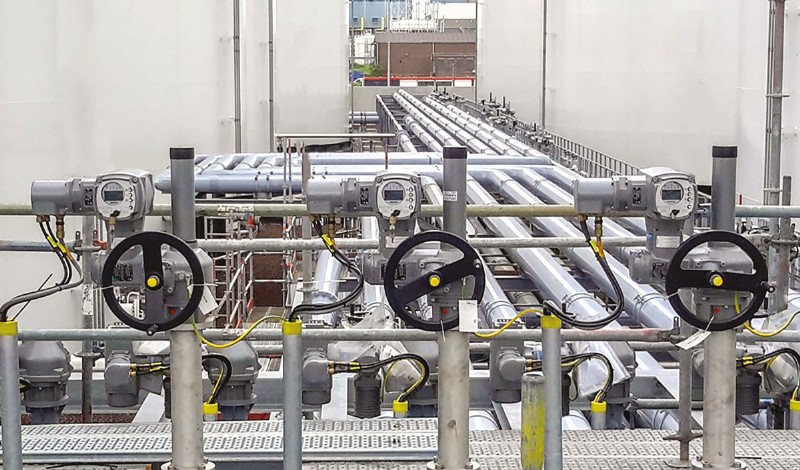Supreme Corrosion Protection For Actuators

A new TÜV certificate confirms that AUMA electric actuators comply with C5-M long and C5-I long corrosivity categories.
A new TÜV certificate confirms that AUMA’s electric actuators have passed the most demanding corrosion protection tests and meet the requirements of EN ISO 12944-6 for corrosivity categories C5-M long (marine, coastal and offshore areas) and C5-I long (industrial areas with high humidity and aggressive atmospheres).
Previous tests had already proved the high corrosion resistance of the advanced two-layer powder coating AUMA introduced a few years ago. The latest certificate confirms that the fullyassembled actuators, including all non-powder-coated metallic parts such as shafts and screws, withstand corrosion equally well.
“Excellent corrosion protection is a key concern for us as an actuator manufacturer,” says Gert Wetzel, Product Manager at AUMA. “Rust is not only ugly but can also cause considerable costs as it reduces plant availability and performance. Most of our actuators are installed in harsh environments, whether indoors or outdoors. We have invested continuously in product and materials design, and we are proud that these challenging tests confirm our products have the best corrosion protection on the market.”
Supreme Corrosion Protection For Actuators Standard AUMA SA and SQ actuators with AC or AM integral controls meet the requirements of corrosivity category C5-M long, with no extra measures or additional costs. C5-I long is available as an option.
To achieve C5-M certification, the products had to undergo a salt mist test (EN ISO 9227:2012) for 1,500 hours and a constant humidity test with condensation (EN ISO 6270-2:2005) for 720 hours. For C5-I certification, the devices had to additionally withstand 30 cycles of a condensation alternating climate test containing sulfur dioxide (EN ISO 3231). Following the tests the AUMA products showed no signs of rust.
Key to the excellent corrosion resistance is a two-layer powder coating applied to the individual housing parts before assembly. As a feature unique to AUMA actuators, the coating also includes the output mounting flange and goes beyond the sealing edge of the joints. This means that the coating remains intact even if the actuator is removed from the valve or if the housing is opened during installation or commissioning.
Tel: +44 (0) 1275 871 141
Email: mail@auma.co.uk
Web: www.auma.com
Published: 14th September 2017
Rachel Wormald, Managing Director at YPS Valves Ltd and Elizabeth Waterman, ...
Are you looking for industry-leading, brand independent valve and actuator ...
As can be seen from the photograph, clearly the resident birds at Bartlett ...
Howco Group has unveiled its latest £1million investment, with the ...
In 2024, Allvalves is poised for an exciting year of growth and expansion, ...
GMM Pfaudler Engineered Plastics & Gaskets are delighted to bring the ...
In the ever-evolving valve industry, GMM Pfaudler stands out for its ...
SAMSON Controls Ltd – part of the SAMSON group - a renowned leader in ...










